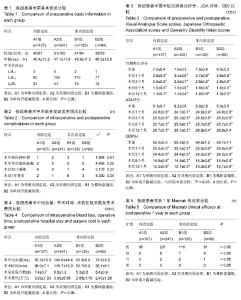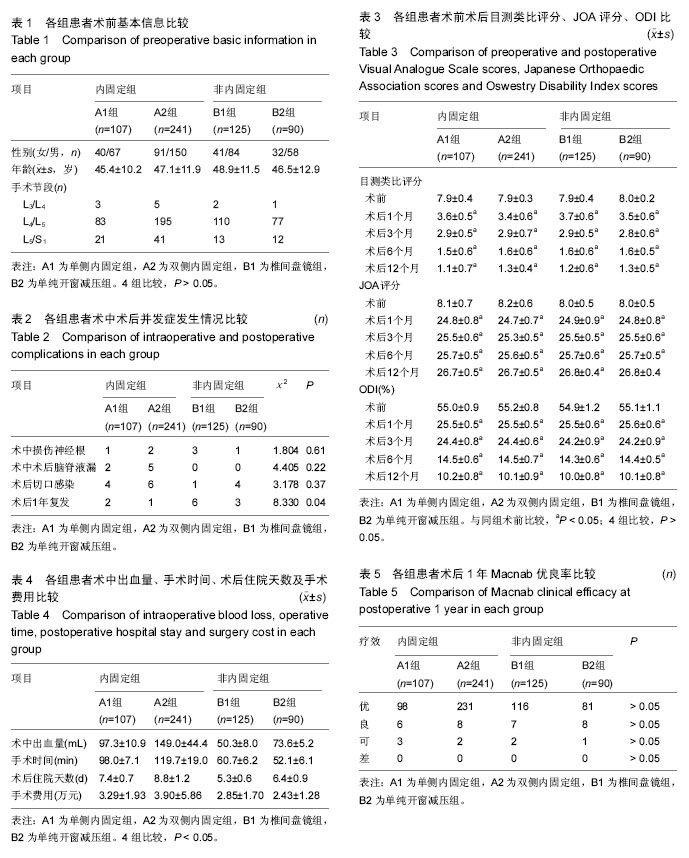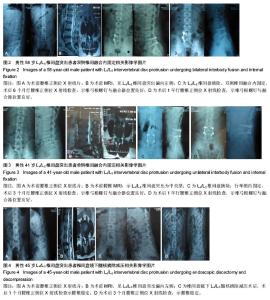| [1] Lee JY, Patel AA. Lumbar spinal stenosis and degenerative spondylolisthesis.Semin Spine Surg. 2013;25(4):256-262.[2] Ambati DV, Wright EK Jr, Lehman RA Jr, et al. Bilateral pedicle screw fixation provides superior biomechanical stability in transforaminal lumbar interbody fusion: a finite element study. Spine. 2015;15(8):1812-1822.[3] Shen XL, Zhang HL, Gu X, et al. Unilateral versus bilateral pedicle screw instrumentation for single-level minimally invasive transforaminal lumbar interbody fusion. Spine. 2014;21(9):1612-1616.[4] Xue HM, Tu YH, Cai MW. Comparison of unilateral versus bilateral instrumented transforaminal lumbar interbody fusion in degenerative lumbar diseases. Spine J. 2012;12(3):209-215.[5] Luo JQ, Gong M, Gao MM, et al. Both unilateral and bilateral pedicle screw fixation are effective for lumbar spinal fusion-A meta-analysis-based systematic review. J Orthop Trans.2014;2(2):66-74.[6] Zang JC,Ma XL,Wang T,et al. Unilateral versus bilateral pedicle screw fixation in lumbar spinal fusion: a meta-analysis of available evidence. Zhonghua Wai Ke Za Zhi. 2012;50(9):848-853.[7] Tomlinson T,Chen J,Upasani V, et al. Unilateral and bilateral sacropelvic fixation result in similar construct biomechanics. Spine (Phila Pa 1976). 2008;33(20): 2127-2133. [8] Kim TH, Lee BH, Moon SH, et al. Comparison of adjacent segment degeneration after successful posterolateral fusion with unilateral or bilateral pedicle screw instrumentation: a minimum 10-year follow-up. Spine. 2013;13(10):1208-1216.[9] Dewing CB, Provencher MT, Riffenburgh RH, et al. The Outcomes of Lumbar Microdiscectomy in a Young, Active Population Correlation by Herniation Type and Level. Spine (Phila Pa 1976). 2008;33(1):33-38.[10] Dirksmeier PJ, Kang JD. Microendoscopic lumbardisc. Oper Tech Orthop.2000;10(4):282-287.[11] Wang XS, Sun RF, Ji Q, et al. A meta-analysis of interlaminar minimally invasive discectomycompared to conventional microdiscectomy for lumbar disk herniation. Clin Neurol Neurosurg. 2014;127:149-157.[12] Casal-Moro R, Castro-Menéndez M, del Campo-Pérez V,et al. Learning Curve of Microendoscopic Discectomy for the Treatment of Lumbar Disc Herniation. Rev Esp Cir Ortop Traumatol. 2010;54(5): 272-279.[13] Dasenbrock HH, Juraschek SP, Schultz LR, et al. The efficacy of minimally invasive discectomy compared with open discectomy: a meta-analysis of prospective randomized controlled trials. Spine. 2012;16(5): 452-462.[14] Nakagawa H, Kamimura M, Uchiyama S,et al. Microendoscopic discectomy (MED) for lumbar disc prolapse. J Clin Neurosci. 2003;10(2): 231-235.[15] Matsumoto M, Watanabe K, Hosogane N, et al. Recurrence of lumbar disc herniation after microendoscopic discectomy. J Neurol Surg A Cent Eur Neurosurg. 2013;74(4):222-227. |



